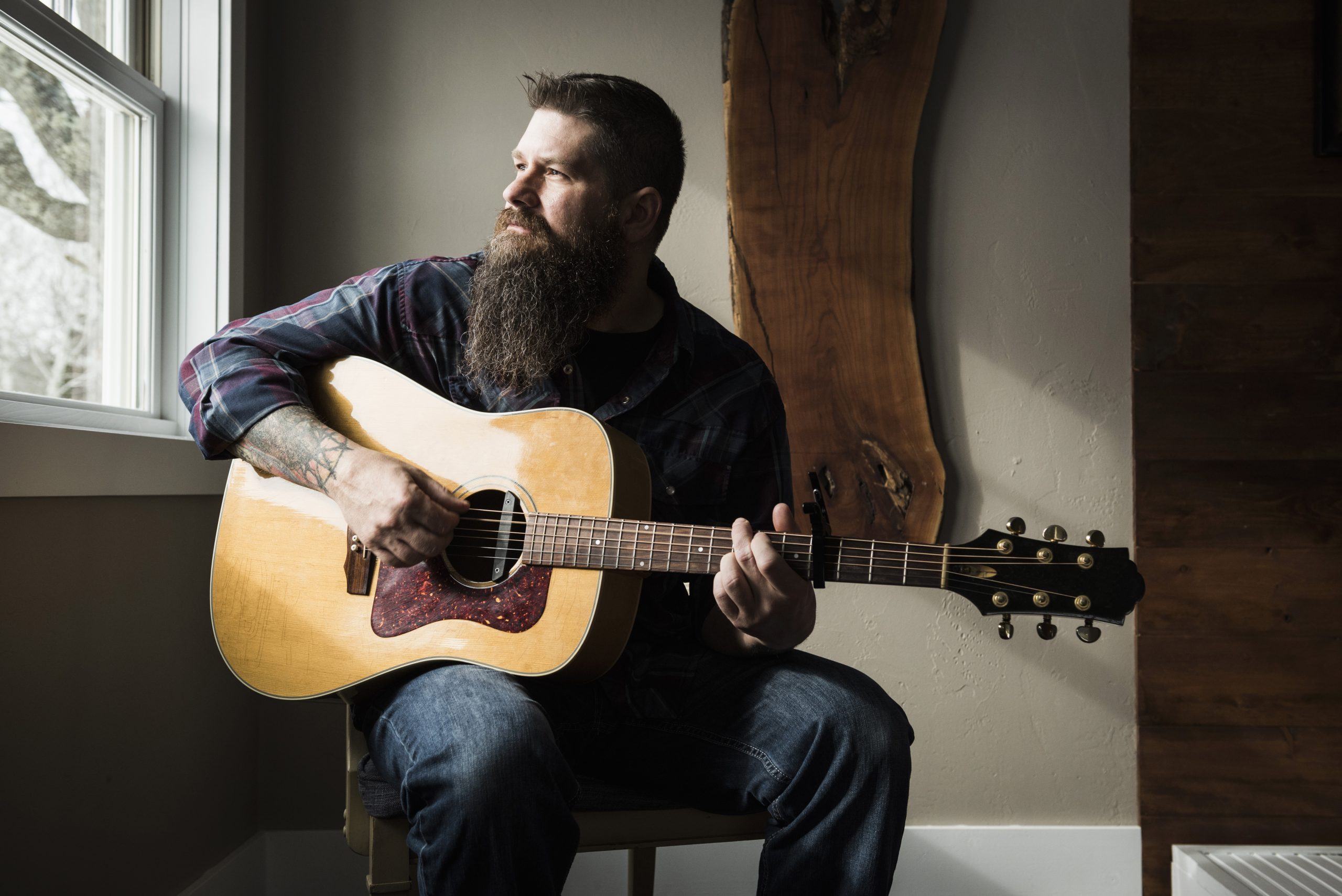KEY TAKEAWAYS
- Strumming the guitar is an important aspect of learning how to play an acoustic instrument for a beginner guitarist.
- There are many strumming patterns out there, but start simple with a basic strumming technique that just goes up and down in regular intervals on the eighth note as you perform your chord progression.
- To help suss out new patterns when guitar playing, think of the guitar as three distinct segments, the bass, mids, and highs.
If you are new to the world of live or recorded performance, you may wonder how to strum a guitar. Many of the best guitars, after all, are acoustics, and these instruments practically beg to be strummed. So what are some fantastic tips to strum the best acoustic guitars during your next performance or studio session? Keep reading to find out.
How to Learn Strumming Patterns for Acoustic Guitar
When playing solo acoustic guitar, strumming should become your new best friend. Though fingerpicking is essential when learning how to play blues guitar, strumming is great for beginners, particularly as they learn to play their favorite songs. Strumming demands acoustic guitar picks, but that is not a huge deal.
Here are some tips for strumming so you can increase your confidence when playing an instrument by the best acoustic guitar brands.
Listen to Music
There are many strumming patterns out there; an almost endless supply, really. To get a handle on what is possible when it comes to strumming, all you have to do is listen to music. You will find just about every available strumming pattern within your favorite songs if you listen intently to what the guitar player is doing. You should start with folk, such as Bob Dylan, where the strumming is front-and-center. Listen on headphones and follow along with the beat to identify the strumming pattern.
Divide the Guitar Into Segments
When trying to come up with unique strumming patterns for your music, it is helpful to split the guitar into three distinct portions. Consider the top two strings the bass, the middle two springs the mids, and the bottom two strings the highs. Once you do that, consider each segment as you strum. If you don’t know when to strum the top two strings, for instance, put them in as you would a bass line. Maybe once on beat every beat, or something similar. The same goes for the mids and the highs.
Start Simple
If you are just learning guitar, keep your strumming patterns simple. Don’t be in a rush to reinvent the wheel; just play a simple up/down/up/down strumming pattern. Once you are supremely confident with the basics, move on to more complex patterns with more variations. This will happen quicker than you realize, and after a few weeks of the original pattern, you will be ready for something new.
Strumming Patterns FAQs
Why is the strumming technique so important?
As you complete your guitar journey, you may notice that strumming is one of the more important guitar techniques. This is all down to rhythm, as different patterns create a unique strumming sound.
How do you hold a guitar pick?
There are many ways to hold a guitar pick, but it is considered good practice to hold it with your index finger and thumb as you perform a chord progression.
What type of guitarist are you?
The type of music you are trying to play impacts the strumming style, as some styles create a brighter sound than others. Try basic chords and affix different guitar strings to try different strumming styles on the guitar neck.
STAT: “If your guitar is badly-suited to your body size and shape, you will find it significantly harder to learn how to strum a guitar properly.” (source)
TIP: Different guitar picks help you access new strumming patterns, as light picks strum differently than heavier picks.
————
Sources:
https://www.wikihow.com/Strum-a-Guitar
https://www.fender.com/articles/play/how-to-strum-beginner-guitar-tips






















